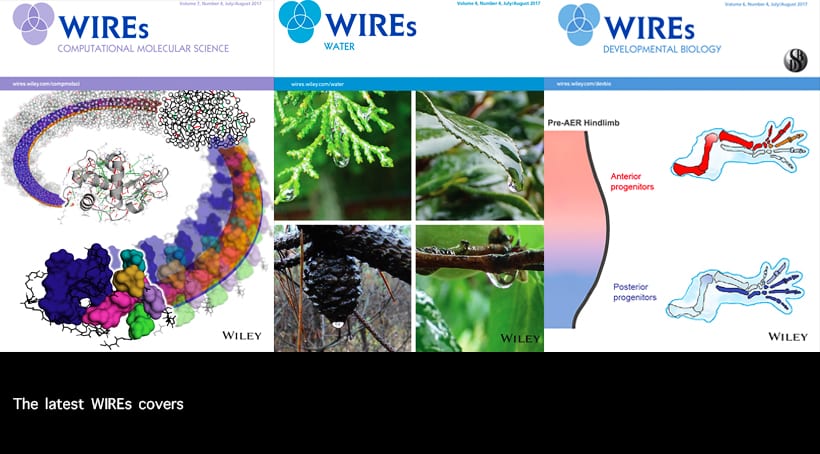The award-winning WIREs (Wiley Interdisciplinary Reviews) series combines some of the most powerful features of encyclopedic reference works and review journals in an innovative online format. WIREs are designed to promote a cross-disciplinary research ethos while maintaining the highest scientific and presentational standards but should be viewed first and foremost as evolving online databases of cutting-edge reviews.
In this new features series, we highlight the artwork on the covers of the most recent WIREs issues and the research behind them. Click on the titles or cover images below to get to the corresponding articles.
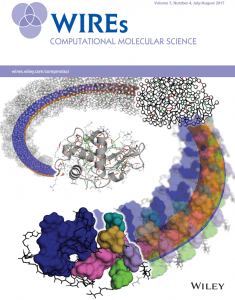 Rigidity theory for biomolecules: concepts, software, and applications
Rigidity theory for biomolecules: concepts, software, and applications
WIREs Computational Molecular Science
by Susanne M.A. Hermans, Christopher Pfleger, Christina Nutschel, Christian A. Hanke, and Holger Gohlke
Researchers at Heinrich Heine University Düsseldorf reviewed fundamental concepts in rigidity theory. These include representations of biomolecules as constraint networks and methodological and algorithmic developments for analyzing these networks and linking the results to bimolecular functions. These analyses address questions of allosteric mechanisms, mutation effects on (thermo-)stability, protein (un-)folding, and coarse-graining of biomolecules. The application of rigidly theory to biomolecules can be broadly applied to scrutinizing biomolecular function from a structure-based point of view and can also complement biomolecular dynamics-focused approaches.
An overview of online based platforms for sharing and analyzing electrophysiology data from big data perspective
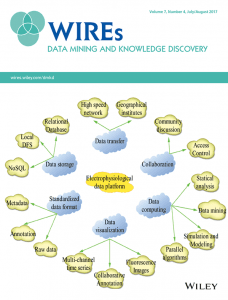 WIREs Data Mining and Knowledge Discovery
WIREs Data Mining and Knowledge Discovery
by Yang Chen, Zhong-yi Wang, Gang Yuan, and Lan Huang
Researchers at China Agricultural University recently published a paper on developed web-based electrophysiological data platforms from the perspective of cloud computing and programming frameworks. They suggest that scientists should choose a conceptual scientific workflow-based programming framework that is associated with an elastic cloud computing environment and that runs big data tools (like Hadoop and Spark). This will facilitate effective data mining and scientific collaboration.
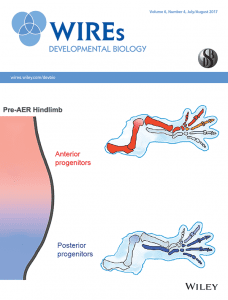 The two domain hypothesis of limb prepattern and its relevance to congenital limb anomalies
The two domain hypothesis of limb prepattern and its relevance to congenital limb anomalies
WIREs Developmental Biology
by Hirotaka Tao, Yasuhiko Kawakami, Chi-chung Hui, Sevan Hopyan
Researchers from the Research Institute at the Hopistal for Sick Children in Toronto and the University of Minnesota study the prepatterning stage of limb development. They discuss a recent model proposing that anterior and posterior domains of the early limb bud generate two halves of the future skeleton. By comparing human phenotypes with those in model organisms, they evaluate whether or not prepatterning helps annotate human disease alleles.
Electrochemical reduction of CO2 for synthesis of green fuel
WIREs Energy and Environment
by Karan Malik, Surya Singh, Suddhasatwa Basu, Anil Verma
Researchers at the Indian Institute of Technology Delhi discuss the potential of electrochemical reduction of CO2 for fuel generation. Their particular focus is on electrocatalysts as the depletion of increasing CO2 of the atmosphere and the generation of alternate fuel sources are among the biggest challenges faced by the global scientific community. This review addresses the suitability of different electrocatalysts along with a possible scope for enhancing the process’s efficiency.
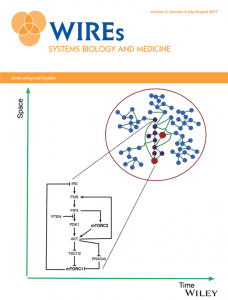 Understanding the mTOR signaling pathway via mathematical modeling
Understanding the mTOR signaling pathway via mathematical modeling
WIREs Systems Biology and Medicine
by Nurgazy Sulaimanov, Martin Klose, Hauke Busch, Melanie Boerries
Researchers from Technische Universität Darmstadt and the German Cancer Consortium review how the combined efforts of mathematical models and quantitative experiments shed new light on understanding the mTOR signaling pathway. Particularly, they discuss the modeling concepts applied in mTOR signaling and the role of multiple feedbacks and crosstalk mechanisms with other signaling pathways. They propose classifying mTOR models by time scale and network complexity, outlining the importance of this classification toward developing highly comprehensive and predictive models.
Throughfall drop size distributions: a review and prospectus for future 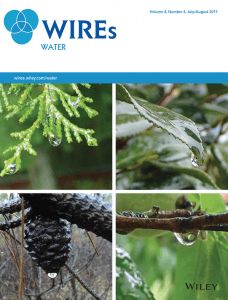 research
research
WIREs Water
by Delphis F. Levia, Sean A. Hudson, Pilar Llorens, Kazuki Nanko
Researchers from University of Delaware, the Institute of Environmental Assessment and Water Research, and the Forestry and Forest Products Research Institute provide a snapshot of the current research on throughfall drop size distributions (the dominant input of water to forests). They trace the historical development of throughfall drop size studies and examine their determinants. They also review the theory and methods of drop size studies to consolidate collective knowledge to date. Levia and colleagues hope that closing knowledge gaps—including the effects of snowmelt on drop size and the effects of different canopy phenophases—will lead to the better conceptualization of rainfall partitioning processes and more definitive linkages between the cause-and-effect relationships between throughfall and soil erosion, forest biogeochemistry, and plant physiological ecology.

